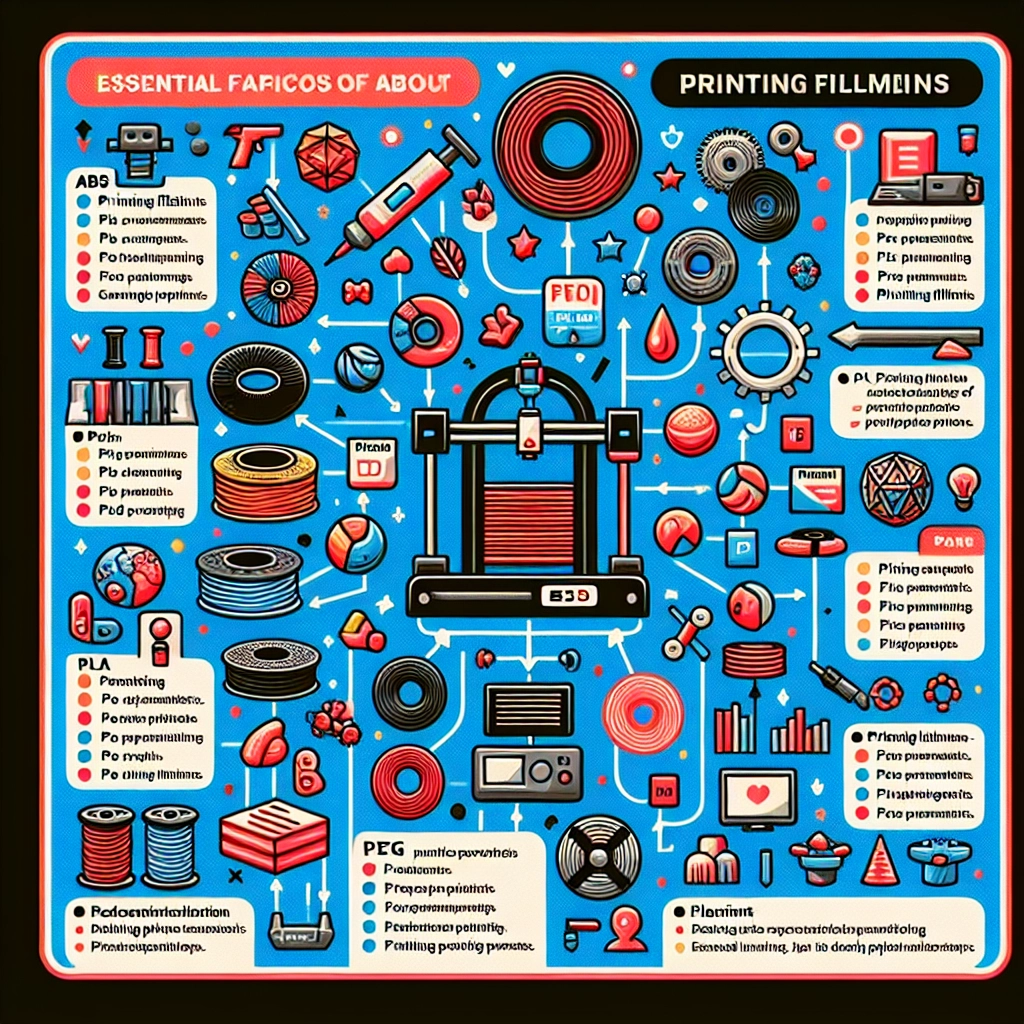Filament Facts: What You Need to Know Before You Print
If you’ve dipped your toes into the vibrant world of 3D printing, you’ve likely found yourself in a colorful ocean of filament options. While the printer itself often gets all the limelight, the filament you choose is just as crucial in ensuring your prints come out looking spectacular and functional. With the myriad of choices available, it’s easy to feel overwhelmed. But fear not! Let’s dive into some filament facts that you absolutely need to know before you hit that print button.
What is Filament?
At its core, filament is the material used by 3D printers to create objects layer by layer. Think of it as the paint for your 3D canvas. Most common filaments include PLA (Polylactic Acid), ABS (Acrylonitrile Butadiene Styrene), and PETG (Polyethylene Terephthalate Glycol-Modified), each boasting unique properties that suit different printing needs.
PLA vs. ABS vs. PETG
-
PLA (Polylactic Acid): If you’re new to 3D printing, PLA is likely where you’ll start. Made from renewable resources like corn starch, it’s biodegradable and offers a sweet smell while printing (seriously, it’s like baking cookies!). PLA is easy to print with and adheres well, making it ideal for beginners and indoor projects. However, remember that it’s not the most heat-resistant filament, so keep that in mind if your design will be exposed to high temperatures.
-
ABS (Acrylonitrile Butadiene Styrene): Now, if you’re looking for durability and heat resistance, ABS is your go-to. It’s used for making things like LEGO bricks and appliance housings. However, printing with ABS can be a bit tricky due to its tendency to warp. You may need a heated bed, proper ventilation, and a bit more patience. Still, the end results are worth it if you need something robust!
-
PETG (Polyethylene Terephthalate Glycol-Modified): PETG combines the best of both worlds. It offers the ease of PLA and the durability of ABS. It’s also resistant to moisture and UV light, making it an excellent choice for outdoor applications. Plus, it’s less prone to warping compared to ABS, which means fewer failed prints!
Understanding Filament Brands and Quality
Not all filaments are created equal. While it might be tempting to go for the cheapest option, investing in high-quality filament can make a significant difference. If you’re venturing into 3D printing, consider reputable brands like Prusa, Hatchbox, or MatterHackers. These brands consistently produce high-quality filaments, which can help reduce print failures and improve the overall quality of your creations.
Filament Colors and Customization
Here’s where things become fun—colors! Filaments come in a rainbow of options, from vibrant yellows and blues to exotic glow-in-the-dark varieties. And if you’re feeling adventurous, many brands provide specialty filaments infused with unique materials, like wood or metal. They can give your prints a distinctive finish and texture, turning an ordinary object into a work of art.
Storage and Maintenance
One crucial aspect of 3D printing that often flies under the radar is filament storage. Humidity is the enemy of filaments, especially for hygroscopic materials like Nylon and PETG. To keep your filaments in tip-top shape, store them in airtight containers with desiccants, or invest in a filament dryer to ensure they retain their quality.
Additionally, keep your filament clean! Dust and debris can get on the spool or even in the nozzle of your printer, leading to clogs and frustrating print failures. A little regular maintenance goes a long way in ensuring a smooth printing experience.
Temperature Settings and Print Profiles
Every filament has its sweet spot when it comes to temperature settings. While your 3D printer will come with default profiles for common filaments, it’s essential to do a bit of research and adjust these settings to get the best results. Too low a temperature can lead to poor layer adhesion, while too high can char or burn the filament. Finding the right balance might take a few test prints, but it’s worth the effort!
Final Thoughts
Choosing the right filament can feel like navigating a maze sometimes, but understanding your options can lead to some fantastic print results. Whether you’re crafting a delicate figurine or a sturdy toolbox, the filament you select will play a vital role in your project’s success. Explore different materials, colors, and brands, and don’t shy away from experimenting! 3D printing is all about creativity and exploration, and embracing the filament journey will elevate your printing game to new heights. Happy printing!

